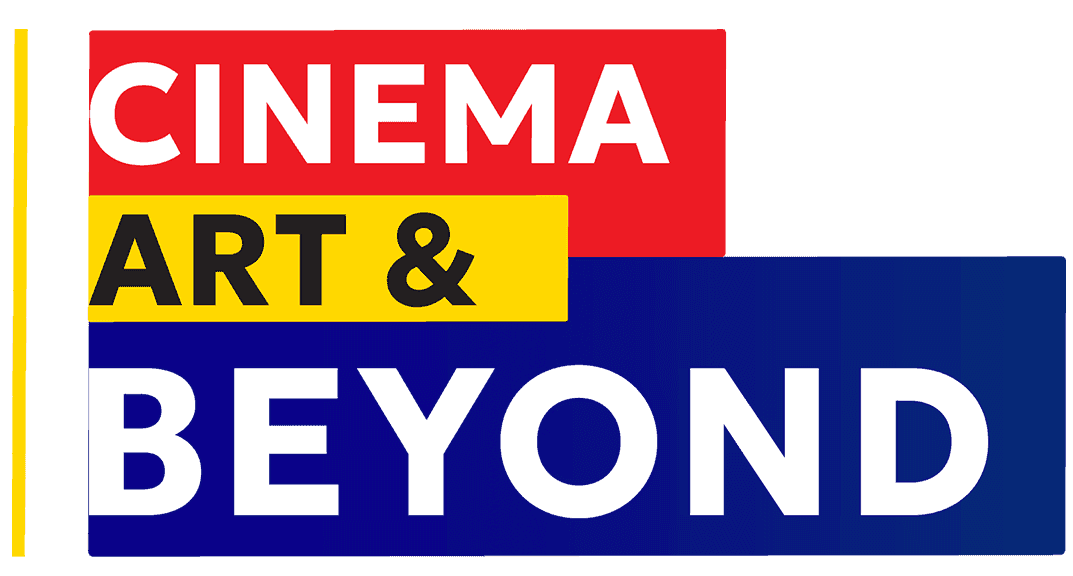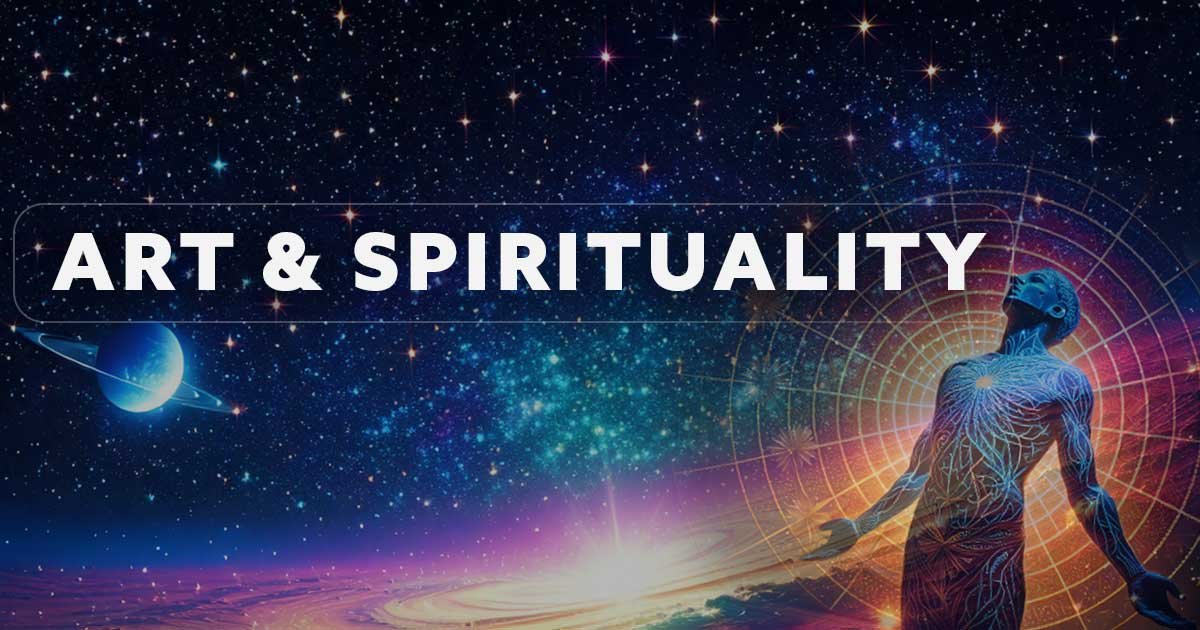Art and Spirituality: You must be wondering what is the connection between these two subjects, there is no connection between these two subjects at all. Art is often considered an expression of creativity, emotion, and imagination, while spirituality is commonly associated with the search for deeper meaning, purpose, and connection with the divine or the universe. However, initially when you start studying any art form, you will not understand the connection between these two subjects. Even while learning the initial level of spiritual teachings, you will feel that spirituality is an entirely different concept. But as you go deeper into the pursuit of spirituality, you will see the connection of spirituality in everything in life. The same thing applies to art; when you explore any art form in great detail, you definitely reach spirituality. In fact, if you look even in the field of science, when a scientist does an intense level of research on a particular subject, he finds himself on spirituality. In this article, we will understand all these subjects with examples and put the puzzle together to understand the connection between art and spirituality. To understand this connection, we must explore both art and spirituality in depth, examine the process of immersing oneself in these disciplines, and analyze examples from history, culture, and even science.

Defining Spirituality
Before understanding the connection between art and spirituality, it is crucial to define spirituality itself. Unlike religion, which often involves organized practices, specific doctrines, and rituals, spirituality is a broader concept. It is the quest for understanding life’s deeper truths, seeking inner peace, and finding a sense of interconnectedness with the universe or something greater than oneself. Spirituality can manifest in various forms, including meditation, contemplation, acts of kindness, or simply an appreciation for the beauty of existence.
The journey into spirituality often involves introspection, self-awareness, and the pursuit of higher consciousness. People who explore spirituality seek answers to profound questions such as: “Who am I?” “What is the purpose of life?” and “How do I connect with the universe?” While these questions may seem abstract, they resonate deeply with the core of human existence and are mirrored in the creative process.
The Nature of Art
Art, in its myriad forms—painting, music, dance, literature, sculpture, and more—is a manifestation of human creativity and emotion. At its core, art is an exploration of the human condition, capturing thoughts, feelings, and experiences that transcend language and culture. Artists often strive to express what is ineffable, using their chosen medium to communicate ideas that words cannot fully convey.
Art is both a personal and universal endeavor. For the creator, it is an intimate process of self-expression and discovery. For the audience, it is an opportunity to experience emotions, stories, and perspectives that evoke a sense of wonder, empathy, or introspection. These shared experiences often touch on themes that align closely with spirituality, such as the search for meaning, the transient nature of life, and the beauty of existence.
The Initial Disconnection
At the beginning of one’s journey into either art or spirituality, the connection between the two may not be evident. When studying an art form, beginners often focus on the technical aspects—learning techniques, mastering tools, and understanding foundational concepts. Similarly, when one embarks on a spiritual journey, the focus may be on understanding basic principles, rituals, or practices.
At this stage, both fields may seem distinct and unrelated. Art appears rooted in the physical—paints, instruments, movements—while spirituality seems intangible and abstract. However, as one progresses in either field, a deeper understanding emerges, revealing how they intersect.
The Convergence of Art and Spirituality
As individuals delve deeper into art or spirituality, the boundaries between the two begin to blur. This convergence can be attributed to several factors:
1. The Transformative Journey
- Both art and spirituality involve a transformative journey. In art, this journey entails moving beyond technical skill to create work that is profoundly personal and meaningful. In spirituality, it involves transcending surface-level practices to achieve self-awareness and universal connection.
- For example, a painter might start by replicating landscapes but eventually discover that their true passion lies in abstract art that conveys their inner emotions. Similarly, a person meditating might initially focus on calming their mind but later experience a deep sense of unity with the cosmos.
2. The Pursuit of Truth
- Both disciplines are fundamentally about seeking truth. Artists strive to depict the truth of their emotions, perspectives, or the world around them, while spiritual seekers aim to uncover universal truths about existence and purpose.
- Consider the works of Vincent van Gogh. His paintings, such as Starry Night, are not just depictions of the external world but also reflections of his inner turmoil and wonder. In this sense, his art is deeply spiritual, capturing his connection to something greater than himself.
3. Transcendence
- Engaging deeply with either art or spirituality often leads to a state of transcendence—a feeling of being lifted beyond the mundane aspects of life. This state is sometimes described as “flow” in the context of art or as “oneness” in spiritual practices.
- A musician lost in the act of improvisation or a dancer fully immersed in their performance may experience a sense of timelessness and connection to something greater. Similarly, a person meditating or praying might feel a profound sense of unity and peace.
4. Expression of the Ineffable
- Both art and spirituality attempt to express what cannot be put into words. Spiritual experiences, such as a sense of divine presence or cosmic interconnectedness, are often described as indescribable. Art serves as a bridge, providing a medium through which these ineffable experiences can be shared and understood.
- For instance, Rumi’s poetry beautifully captures spiritual truths in a way that transcends intellectual understanding, touching the soul of the reader or listener.
Examples of the Art-Spirituality Connection
1. Visual Arts
- Many visual art traditions have roots in spirituality. From the intricate mandalas of Tibetan Buddhism to the stained glass windows of Gothic cathedrals, art has been used to convey spiritual teachings and inspire awe.
- Abstract art, too, often has a spiritual dimension. Wassily Kandinsky, a pioneer of abstract art, believed that colors and forms could evoke spiritual experiences and sought to create works that resonated with the soul.
2. Music
- Music has long been a vehicle for spiritual expression. Gregorian chants, Sufi qawwali, and Indian classical ragas are all examples of musical traditions that aim to elevate the spirit and connect with the divine.
- Even in secular contexts, music can evoke profound emotions and a sense of transcendence, demonstrating its spiritual power.
3. Dance
- Dance, as a form of bodily expression, often serves as a spiritual practice. In Indian classical dance forms such as Bharatanatyam, movements and gestures are deeply symbolic, conveying stories from mythology and expressing devotion.
- Contemporary dance can also be spiritual, as it allows dancers to lose themselves in the rhythm and movement, connecting deeply with their inner selves and the audience.
4. Literature
- Great works of literature often explore spiritual themes. For instance, Herman Hesse’s Siddhartha traces the spiritual journey of a man seeking enlightenment, while the poetry of Mary Oliver celebrates the sacredness of nature and the interconnectedness of all things.
5. Science
- The paragraph intriguingly mentions the connection between science and spirituality. While science is often seen as purely rational, many scientists have found their research leading them to spiritual insights.
- Albert Einstein famously remarked, “The most beautiful thing we can experience is the mysterious. It is the source of all true art and science.” This sense of mystery and wonder is deeply spiritual, reflecting a reverence for the universe and its underlying truths.
The Broader Implications
The connection between art and spirituality extends beyond individual experiences. It has profound implications for society as a whole:
1. Healing and Transformation
- Both art and spirituality have therapeutic potential. Art therapy uses creative expression to help individuals heal from trauma and discover deeper aspects of themselves. Similarly, spiritual practices such as mindfulness and meditation promote mental and emotional well-being.
2. Fostering Empathy and Understanding
- By exploring universal themes, art and spirituality can bridge cultural and personal divides. They encourage empathy, compassion, and a sense of shared humanity.
3. Inspiration for Social Change
- Many artists and spiritual leaders have used their work to inspire social change. From Martin Luther King Jr.’s spiritually grounded speeches to Pablo Picasso’s Guernica, which protested the horrors of war, these expressions show how art and spirituality can unite to address societal issues.
Conclusion: Putting the Puzzle Together
Art and spirituality may seem disconnected at first glance, but they are deeply intertwined at their core. Both involve the pursuit of truth, the expression of the ineffable, and the transcendence of ordinary experiences. Whether through painting, filmmaking, music, dance, acting or scientific inquiry, the act of delving deeply into any field often reveals a spiritual dimension.
To fully appreciate this connection, one must be willing to immerse themselves in the journey, embracing both the technical and the transcendent aspects of their chosen pursuit. Ultimately, the exploration of art and spirituality is an exploration of life itself—a quest for meaning, beauty, and a sense of connection with the universe.
This profound relationship invites us to see the world in a new light, recognizing the spiritual in the artistic and the artistic in the spiritual. It encourages us to approach life with curiosity, creativity, and a deep sense of wonder, uncovering the sacred in every aspect of our existence.
Also Read : What is Art? Understand Deeply
Also Read : What is Cinema | Understand Correctly
Also Read : What is Filmmaking | Beginners Guide
Frequently Asked Questions ;
How does creating or experiencing art become a spiritual practice?
Answer: Creating or experiencing art can become a spiritual practice when it allows individuals to connect deeply with their inner selves, transcend everyday concerns, and experience a sense of unity with something greater. For example, painting, dancing, or listening to music can serve as meditative acts that foster mindfulness and self-awareness.
Can scientific inquiry lead to spirituality like art does?
Answer: Yes, scientific inquiry can lead to spirituality. Scientists often experience awe and wonder when uncovering the mysteries of the universe, leading to a deeper appreciation for its interconnectedness. This sense of wonder aligns with spiritual experiences, as both involve exploring the unknown and seeking universal truths.
Does appreciating art require a spiritual perspective?
Answer: No, appreciating art does not require a spiritual perspective. However, a spiritual lens can deepen the appreciation, allowing one to see art as a reflection of universal truths or as a pathway to transcendence.
What role does intuition play in both art and spirituality?
Answer: Intuition is central to both art and spirituality. In art, intuition guides creative decisions, allowing the artist to express ideas that might not be fully conscious. In spirituality, intuition often serves as a compass for understanding deeper truths and connecting with the unseen.


Art is truly a medium for transcendence and inner discovery.
Great article!